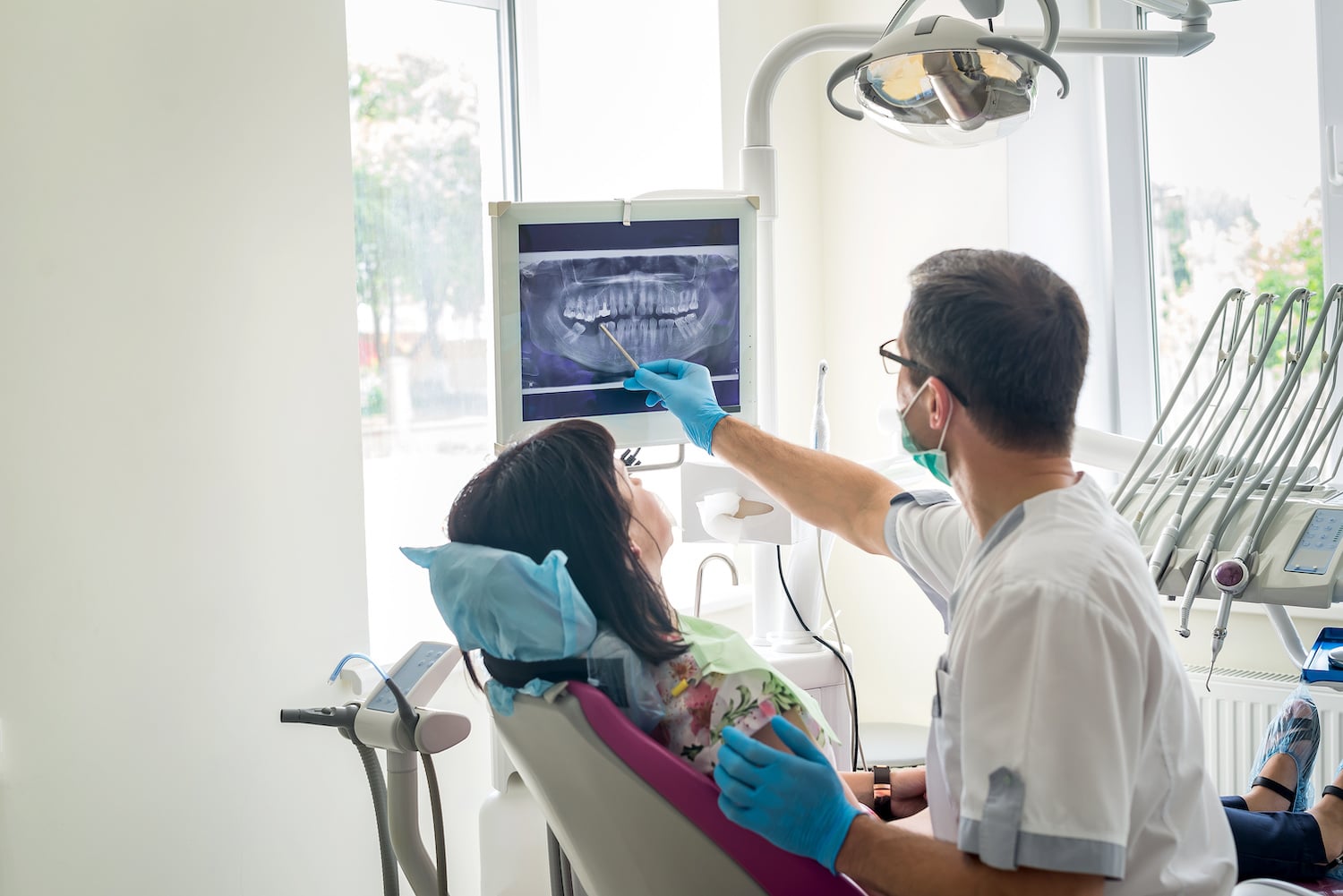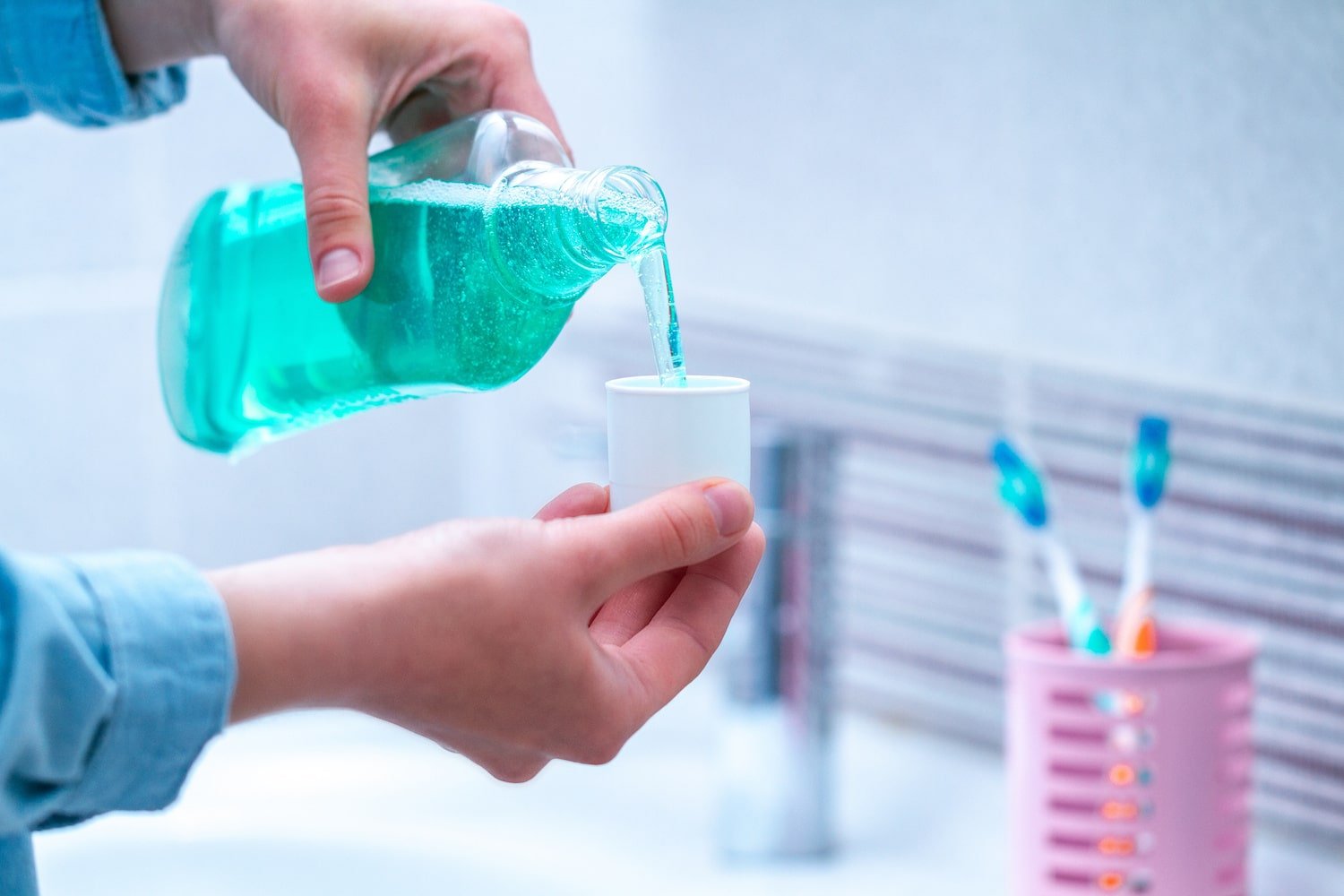Unfortunately, gingivitis is a real disease— not just something your dentist talks about to scare you. Without the proper dental care, gingivitis can develop, causing symptoms like:
- Irritation
- Redness
- Swelling
But thankfully, there are ways to treat gingivitis and reverse it. One way to do so is with prescription chlorhexidine mouthwash. Let’s take a closer look at what chlorhexidine (CHX) mouthwash is used for and the possible side effects that come with it.
What Is Chlorhexidine Mouthwash?
Chlorhexidine (klor-HEX-i-deen) mouthwash is a prescription rinse with antibacterial properties. This germicidal mouthwash helps decrease bacteria in your mouth.
Based on a 2017 study, CHX mouthwash is the most effective antiseptic mouthwash in controlling dental plaque and gingivitis. The same study concluded that CHX mouthwash can be offered to patients who have dental plaque-induced gingivitis.
You cannot find chlorhexidine mouthwash over the counter— it must get prescribed to you by your dentist.
What Is It Used For?
CHX mouthwash is primarily used to treat gingivitis. Gingivitis is a mild and early form of gum disease (periodontitis) that manifests when your mouth gets infected due to a buildup of bacteria and plaque (a sticky, nearly invisible film on the teeth). The infection occurs where the teeth meet the gums.
Gingivitis itself doesn’t always cause symptoms but often makes the gums swollen, red, and tender. Since gingivitis doesn’t seem to always cause terribly uncomfortable symptoms, many people are tempted to just ignore it. However, if gingivitis is left untreated, it can quickly lead to periodontitis, which is a much more severe stage of gum disease.
Periodontitis is serious, so you really don’t want to develop this disease. Without treatment, periodontitis can destroy the bone that supports your teeth, potentially causing tooth loss. It also creates an increased risk of heart disease, diabetes, and respiratory disease.
There are certain factors that increase the chance of developing gingivitis, including:
- Smoking or chewing tobacco
- Pregnancy or other hormonal changes
- Family history of gum disease
- Diabetes
The best way to prevent gingivitis is to practice proper dental care, which includes:
- Brushing your teeth twice a day
- Flossing at least once a day
- Getting dental cleanings every six months
- Rinsing with an over-the-counter mouthwash
- Limit sugary foods and drinks
Signs and symptoms of gingivitis include:
- Bad breath that doesn’t go away (even after brushing)
- Swollen, red, and tender gums
- Gums that bleed easily
- Sensitivity to hot and cold foods
- Pain when you chew food
- Loose teeth
- Gums are pulling away from the teeth

Your dentist will confirm the diagnosis of gingivitis with X-rays. If you have gingivitis, your dentist may refer you to a gum disease specialist called a periodontist, or they may handle your treatment plan themself.
Since gingivitis is reversible, your dentist will come up with a treatment plan that helps control the bacterial infection and restores healthy teeth and gums. A gingivitis treatment plan can include:
- A thorough professional teeth cleaning to remove plaque and tartar
- “Scaling” to remove bacteria from the teeth and under the gums
- “Planing” to smooth the surface of the tooth roots
- Dental restorations to smooth jagged surfaces (smooth surfaces are easier to clean)
- An at-home dental cleaning plan
- A prescription antibiotic mouthwash like chlorhexidine
Note: Chlorhexidine mouthwash is used to treat gingivitis, not periodontitis. CHX can actually make periodontitis worse.
How to Use Chlorhexidine Mouthwash
The dosage and length of use for CHX mouthwash differ for each patient, so be sure to use it exactly how your dentist ordered it. Typical dosages for adults are 15 milliliters of the rinse twice a day, but again, your dentist will prescribe the specific dosage you need for your particular case.
⚠️ Do not change your dosage unless your dentist tells you to. ⚠️
To use CHX mouthwash, follow your doctor’s orders on the prescription label. Use the rinse after you’ve brushed and flossed your teeth. Be sure to rinse the toothpaste completely from your mouth before using the mouthwash. Avoid eating or drinking for several hours after using the oral rinse (including rinsing your mouth with water).
Swish the chlorhexidine wash in your mouth for 30 seconds, then spit it out. Do not swallow the rinse, and do not mix it with water.
Possible Side Effects
Just like most prescription medications, there is a risk of side effects with chlorhexidine mouthwash. More common side effects of CHX rinses include:
- Taste alteration: Your sense of taste may be altered during treatment. In rare cases, chlorhexidine may cause permanent taste alteration.
- Staining: CHX mouthwash can cause staining on tooth surfaces, restorations, and your tongue. Usually, a thorough cleaning from a dental professional can remove stains.
- Tartar formation: This prescription medication may cause an increase in tartar formation.
- Bitter aftertaste: You may experience a bitter aftertaste after using CHX. Do not rinse your mouth with water after using the mouthwash because this will increase the bitter taste.
Tell your doctor right away if you experience more rare side effects, such as:
- A serious allergic reaction (Signs of allergic reactions can include shortness of breath, nasal congestion, skin rash/hives, itching, or swelling of the face.)
- Mouth irritation
- Swollen glands on neck or side of face
- Irritation on the tip of your tongue
Keep Gingivitis at Bay With Good Dental Hygiene
Chlorhexidine is a great, effective antibacterial mouthwash that helps reverse gingivitis.
We know that talking about gingivitis and periodontitis can be stressful or even scary. And while going to the dentist can be anxiety-inducing for many people, it’s always better to be proactive about your dental health so that you don’t have to deal with the complications of gum disease down the line.
Here at Wayzata Dental, we’re committed to practicing relaxing and minimally-invasive dentistry. With the laser dentistry we provide, you can avoid the drills and needles that are uncomfortable and frightening.
The best way to experience great oral health is to practice regular brushing and flossing and schedule bi-annual dental cleanings. Reach out to Wayzata Dental today to learn more about our pain-free laser dentistry offerings.



